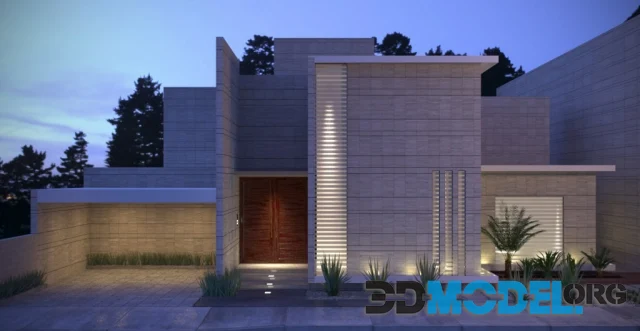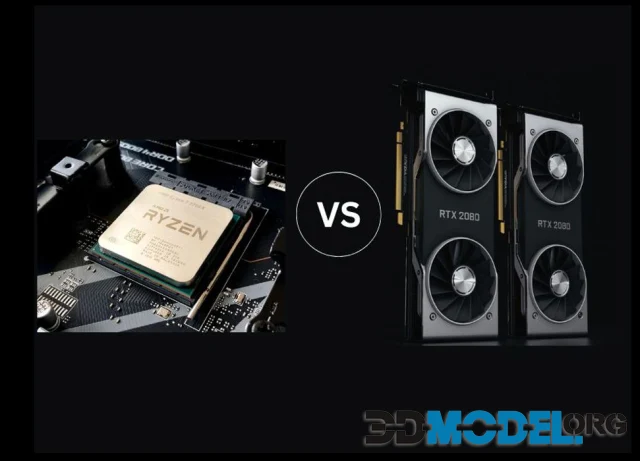Choosing the Best Render for Architectural Visualization

If you're an architect and you're thinking about creating an architectural visualization, you might be wondering which of the two popular render engines will be the best for you. The real-time engine uses the video card resources to render your images at the fastest speed possible. However, there are also non-real-time engines, such as Octane Render, which use a graphics card rather than a CPU.
You can find many popular render engines for free in our addon catalog, such as Corona Renderer 9 for 3ds Max or V-Ray Advanced for Maya in the latest version.
Real-time engines render images at the highest speed and use video card resources
When it comes to rendering, the most important factor is speed. GPUs are faster than CPUs. But, if you have a very complex scene, it can be difficult to get the most out of your GPU. However, you can speed up your renders with the addition of more GPUs.
GPUs have many cores, which helps them perform several tasks at once. This is ideal for processing information and performing complex graphical computations quickly. The key to rendering fast is to have enough video memory to handle your 3D scenes.
A CPU can also do a lot, but it can be hard to use it for the most efficient way. There are several reasons for this. First, the CPU is great at handling information in a sequential manner. It is not as quick at handling graphics, though. If you have a high-end CPU, it may be able to render faster than a GPU.
In fact, some GPU renderers actually provide a CPU-based solution. Some popular options include Arnold and Iray. They may be a good choice for those who want to avoid the headache of using a graphics card.
There are also hybrid render engines that can handle both. One of these is Octane, which claims to be the fastest. Although it is not the most sophisticated engine, it should be able to deliver similar performance improvements when you are not using other plugins.
Another notable feature is that it has a scalable ray tracing engine. Using the latest AMD Radeon Rays technology, it is designed to produce photorealistic images. Whether you're a designer or a digital artist, it can help you produce visually stunning, realistic renders.
Compared to the CPU, a GPU is better at 3D rendering. Nevertheless, a CPU may be more powerful in a specific area, such as calculating geometric data. You'll need at least one high-end Nvidia graphics card to make the most of a GPU.
Lastly, a GPU is great for rendering in parallel. If you're rendering large scenes in a fast-paced environment, it's important to have sufficient video memory.
Octane Render uses a graphics card instead of a CPU
Octane Render is a real-time 3D rendering engine that uses a graphics card in your computer instead of a CPU. According to the company's literature, it is the fastest GPU rendering engine on the market. Using a GPU means fewer hardware costs, faster speeds, and better overall rendering.
The engine is not cheap, however. It is available as a standalone application or as an add-on for a variety of software. For example, it is integrated into Autodesk Maya. Many After Effects customers use the product.
OctaneRender is one of the first physically-correct, GPU-accelerated rendering engines. It boasts spectrally accurate visualization and a beautiful lighting system. This rendering engine has a low learning curve and a high output. Compared to other rendering engines, OctaneRender has a small number of cores, but it uses more than 8GB of VRAM to render.
While there is a plethora of options, OctaneRender has a few features that set it apart. One is the GPU-based Render Network, which connects idle GPUs to allow users to send render jobs to them. Another is the Redshift engine, which is touted as a must-have in the VFX industry.
Among other things, the Redshift engine is also integrated into SideFX Houdini and Autodesk Maya. It is not as expensive as its counterpart Lumion.
Other features of OctaneRender include parallel compute capabilities that help make rendering even faster. Unlike a traditional CPU rendering engine, it can be used in the cloud. It can produce an output of up to 15k x 10k pixels.
As with any software solution, the best one for you is going to depend on your particular needs. In general, it is a good idea to get at least 2GB of RAM. Depending on the specific applications you are using, you might need more.
Octane Render is a great way to speed up your architectural visualization projects. Whether you are looking for a simple software solution or a complete turnkey workflow, OctaneRender has what you need. And with a low learning curve, it's a great choice for new users.
AutoCAD Architecture is a powerful architect rendering software
AutoCAD Architecture is an architect rendering software package that lets architects and designers create floor plans and other architectural drawings. The package features a variety of functions designed to simplify the drawing process and reduce errors. It is also a very convenient tool to use, with a user-friendly interface.
There are a number of different architecture software programs on the market. Some are free, while others cost money. Architectural CAD software can improve the efficiency of the design process by reducing the amount of time spent on a project. Architects can also create more realistic renderings of their designs before construction, to better convey their vision to their clients.
There are a wide range of architectural CAD software available, each with its own unique features. You'll want to find the one that best suits your needs. For example, if you need to analyze structural integrity, you might look into ArchiCAD.
Another option is CorelDRAW. This 2D drafting software is known for its high image quality. With a dedicated team behind it, it offers a range of tools for creative design.
Despite its steep learning curve, Rhino is a powerful 3D modeling and rendering tool. In addition, Rhino can automate complex modeling operations.
If you're looking for a simpler and faster architecture software, Chief Architect might be the answer. This software allows architects to sketch floor plans and other models in a matter of minutes.
If you're in the market for an advanced architect rendering software, you should consider Revit. This BIM-oriented offering from Autodesk lets you coordinate teams working on a single scheme. Among its features are an easy-to-use interface, real-time collaboration, and automatic framing.
Aside from these, AutoCAD also provides tools for creating elevations and floor plans. These can be edited in the program or downloaded to a PC or mobile device.
As a part of the Autodesk toolbox, AutoCAD Architecture has a wide array of functions for building performance analysis, vehicle path calculations, and structural analysis. All of these are incredibly helpful to architects and designers.
In addition, CAD software is useful in analyzing air flow simulations, and performing structural integrity analysis. Using architectural CAD software can also help you check component overhangs and clearances.
3ds Max is the best architecture visualization software
Autodesk 3ds Max is a highly recommended architectural visualization software. It helps designers and architects to create photorealistic architectural renderings. This software also provides an advanced design toolbox. You can improve your experience and productivity with this application by adding complementary tools and plugins.
With its user-friendly interface and powerful features, you can easily create and edit an impressive architectural rendering. Moreover, you can add details, textures, and lighting to your models and scenes. In addition, it has a real-time render option, which allows you to interact with your work in real time.
Another advantage of this software is its compatibility with other software and rendering engines. The program is designed to be compatible with other programs like SketchUp, AutoCAD, and BricsCAD. These software will reduce your system requirements and make your projects easier to manage.
There are two versions of 3ds Max, the standard version and the student edition. Both are cloud-based. Depending on your needs, you can either choose a subscription or a one-time purchase. However, you will need a computer with high processing power and a high-speed internet connection.
If you are new to the world of modeling and animation, you may find 3ds Max a little overwhelming. But if you are an experienced user, this software is a good choice. Its coding language, MAXScript, develops the UI and helps you to get the most out of your modeling efforts.
For professional architects, you can opt for Lumion. The software allows you to create 360-degree views, architectural visualization videos, and richly detailed environments. Plus, it works with 3ds Max, so you can seamlessly bring your designs to life.
Alternatively, you can use FStorm Render. It's an excellent GPU-based rendering engine. With this software, you can easily convert any scene from other 3d architectural programs. Also, its proprietary technologies and ease of use with light sources make it a valuable software.
Another option is Enscape. This software offers an easy-to-use interface and a library of 3D models for you to create and visualize your architecture. And it's even compatible with ArchiCAD.
Other posts:
Ctrl
Enter
Noticed a misTake
Highlight text and press Ctrl+EnterRelated news:
Comments (0)






